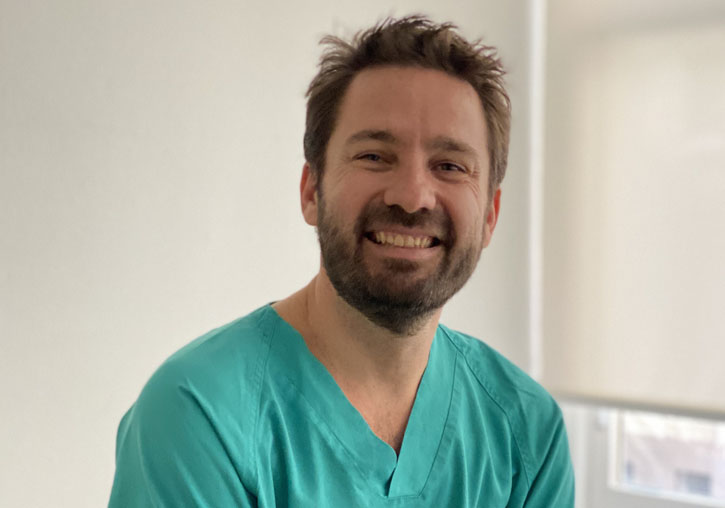An international study improves traumatic brain injury diagnosis with the use of precision medicine
- Scientific Culture and Innovation Unit
- November 11st, 2019

The research, in which the professor of the Department of Surgery of the University of Valencia Rafael Badenes participates, reveals that the traumatic brain injury (TBI) affects to a greater extent people over 65 years with comorbidities. This contrasts with the fact that, until now, this ailment was related to young men and in good health. The study recommends improving the initial prognosis of this condition, which causes 1.5 million hospital admissions and 57,000 deaths annually in Europe.
The research, published in The Lancet Neurology, and in which 32,500 patients from 69 hospitals in 19 countries have participated, identifies accidental falls as a leading cause of traumatic brain injury, compared to the popular belief that links TBI to traffic accidents. The only exception is represented by patients admitted in the intensive care unit (ICU), who usually have TBI mostly as a result of traffic accidents.
The study differentiates three levels of sick people: those who go to the emergency room, those who are hospitalised and those who enter the ICU. Each of them shows a different degree of severity of traumatic brain injury and their recoveries are uneven. Experts explain that people in the first two groups are diagnosed with mild TBI while the severity of TBI in the ICU ranges from moderate to severe.
The results of the work reveal that the assignment of severity to each patient determines the treatment and care they receive, but also their subsequent recovery. 83% of people admitted in the ICU, 53% of those hospitalised and 30% of those who came to the emergency room had not achieved a full recovery 6 months after the accident, which was also reflected in a worse quality of life.
The authors link these deficiencies in medical care to the traditional TBI classification, which is outdated. Faced with this method, which they consider ineffective, research suggests an approach to precision medicine. “The technique of advanced neuroimaging and blood biomarkers can improve the characterisation of the type of damage and its severity. The differentiation of patients by care procedures offers an innovative perspective”, says Professor Badenes.
To the study “Case-mix, care pathways, and outcomes in patients with traumatic brain injury in CENTER-TBI: a European prospective, multicentre, longitudinal, cohort study” European and Israeli medical centres joined. The research follows the treatment they receive and the real-time evolution of more than 4,500 patients affected by TBI. It also analyses the medical history of a second group of about 28,000 sick people, especially the clinical care to which they were subjected and the progress in their state of health. It subsequently compares the results obtained from the two groups.
CENTER-TBI project
This study has been carried out within the framework of the European CENTER-TBI project, inscribed, for its part, within the international INTER-TBI initiative, which investigates the social and health consequences of head trauma. CENTER-TBI was founded in 2011 with the aim of characterising and describing this brain damage in a European context. The purpose of the project is to improve the clinical care and care of patients with TBI.
The conclusions of this research are in line with a previous study, carried out by CENTER-TBI and presented to the European Commission in 2017, which urged bringing precision medicine to the treatment of traumatic brain injury to lighten the social and human costs of this condition.
Article:
Steyerberg Ewout W. et al. «Case-mix, care pathways, and outcomes in patients with traumatic brain injury in CENTER-TBI: a European prospective, multicentre, longitudinal, cohort study». Lancet Neurology 2019;18:923-34.
File in: Recerca, innovació i transferència , Producció científica , Cirugia , Facultat de Medicina i Odontologia , Internacionalització recerca , Cultura Científica , Grups de recerca , Investigació a la UV
















